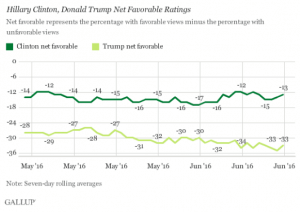 The two main candidates for the United States presidency both have a problem appealing to voters in terms of favourability and trustworthiness. Personally I consider the claims of Hillary Clinton’s dishonesty to be overblown, which I wrote about here. In fact, analysis of her statements in the course of the election shows she is actually one of the more honest politicians. However, once someone has decided that they can’t trust someone it’s very difficult to change that. I don’t think Donald Trump can be trusted, and I can’t imagine that opinion ever altering.
The two main candidates for the United States presidency both have a problem appealing to voters in terms of favourability and trustworthiness. Personally I consider the claims of Hillary Clinton’s dishonesty to be overblown, which I wrote about here. In fact, analysis of her statements in the course of the election shows she is actually one of the more honest politicians. However, once someone has decided that they can’t trust someone it’s very difficult to change that. I don’t think Donald Trump can be trusted, and I can’t imagine that opinion ever altering.
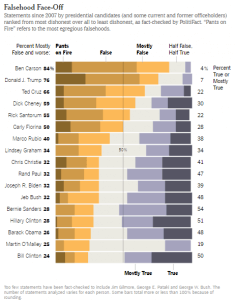 Many US voters feel the same about one or both the two main candidates. Some have decided to vote for one of the third party candidates instead, or to not vote at all. Because of the way the US electoral system works though both those options are effectively a vote for the Republican or Democratic candidate you want to win the least. Many Republicans in particular have decided to vote for their party’s candidate not because they support him, but because they think he will make better appointments to the Supreme Court.
Many US voters feel the same about one or both the two main candidates. Some have decided to vote for one of the third party candidates instead, or to not vote at all. Because of the way the US electoral system works though both those options are effectively a vote for the Republican or Democratic candidate you want to win the least. Many Republicans in particular have decided to vote for their party’s candidate not because they support him, but because they think he will make better appointments to the Supreme Court.
The impression given is that there is a wide ideological divide on the court and that there is a lot of dissent between the liberal and conservative justices. As can be seen from the graph below it is often possible to predict a justice’s decision based on their political affiliation. However, I analysed the decisions of the US Supreme Court from 2008-2015 and discovered that several of the assumptions that people make about the way the court votes are not as clear-cut as everyone thinks. What is clear though is that the Court is currently more conservative than at any time in at least the last eighty years. Therefore, also contrary to the current messaging, if it became more liberal that would not be something unusual for the country.
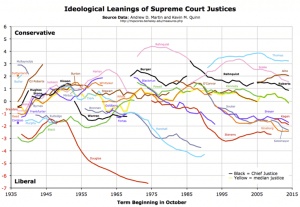
Ideological Leanings of US Supreme Court 1935-2015 (Source: Wikipedia)
During the eight years of President Obama’s term the Supreme Court has made 646 decisions. What may surprise many is that 345 (53%) of decisions had no dissents, in another 43 (7%) only one justice dissented, and 78 (12%) saw just two justices dissenting. In seventy (11%) cases, three justices dissented. And despite what many may assume, those dissenting are not automatically ideologically aligned. In the 148 cases where two or three judges dissented from the majority, the dissenters were a mix of conservative and liberal justices in 35 (24%).
And so we come to the 5-4 decisions, which are the ones Republicans are presumably most concerned about because they’re the ones that might change if there are a majority of liberal justices on the Court. There have been 110 5/4 decisions over the last eight years, which is 24% of the total. However in 27 of those, the four dissenters were a mix of liberal and conservative justices so they should not concern those worried about conservative ideological purity. Also, there was no conservative justice who stood out as siding with liberal justices either, and more often than not, there was more than one conservative justice siding with the liberal justices in dissent. In the 27 cases where the four dissenters were a mix of both liberal and conservatives, 26 included Justice Kennedy, 20 included Justice Alito, 19 included Justice Thomas, 17 included Justice Roberts, and 16 included Justice Scalia.
In the 39 cases (6% of all cases overall) where all the dissenters were conservatives, the results are again are not quite what I suspect Republicans would expect. I think they would say that their hero Justice Scalia was the one who led the charge for conservatives and that Justice Roberts was the one who betrayed conservatives by siding with liberals. This is not what the statistics show. The conservative justice who sided with three others in dissent most often was Justice Alito (38) followed by Justice Roberts (36), and Justices Scalia and Thomas (both 34). Justice Kennedy was one of four opposing conservative justices just nine times.
So it’s really only a tiny percentage of cases (7%) when the four dissenters were the four liberal justices that the decision of the Supreme Court might have been different if the composition of the court was different. As an outsider I find this disturbing in itself. I couldn’t even tell you the names of any members of the New Zealand Supreme Court, let alone their political or ideological affiliation, and I suspect that’s true in most countries in the OECD. That’s because appointments are apolitical and decisions are based strictly on the law and not ideology. That is clearly not the case in the United States. Decisions are sometimes extremely contentious and justices from both sides of the political aisle are accused of letting their personal views effect their decisions.
What it comes down to is that there are just five things that conservatives have a major problem with and that they worry a more liberal Supreme Court will change. However, analysis of these issues shows that they do not need to be concerned.
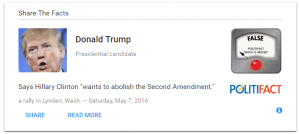 Gun Rights
Gun Rights
This has been a political hot potato for years now, and it’s got a lot hotter since the 2006 Supreme Court decision (District of Columbia v. Heller) that decided the Second Amendment said everyone had the right to own a gun. As part of his election campaign, Donald Trump has been trying to convince voters that Hillary Clinton would abolish the Second Amendment, a claim that Politifact has rated False on their Truthometer. Politifact could find no evidence that Clinton had ever said such a thing so they asked the Trump campaign for their evidence. The Trump campaign did not respond. When asked their position, the Clinton campaign specifically stated that they did not want to abolish the Second Amendment.
Yesterday of course, Trump’s attempts to convince voters that Clinton wanted to take their guns away took a new turn with his failed attempt at humour when he suggested that assassination was an option in stopping Clinton if she won the election.
As Clinton stated in a Tweet:
"A person seeking to be the President of the United States should not suggest violence in any way." pic.twitter.com/Uu55CBCqdK
— Hillary Clinton (@HillaryClinton) August 9, 2016
As an aside, I loved Elizabeth Warren’s responses:
.@realDonaldTrump makes death threats because he's a pathetic coward who can’t handle the fact that he’s losing to a girl.
— Elizabeth Warren (@ewarren) August 9, 2016
Your reckless comments sound like a two-bit dictator, @realDonaldTrump. Not a man who wants to lead the greatest democracy on the planet.
— Elizabeth Warren (@ewarren) August 9, 2016
Even if Clinton wanted to abolish the Second Amendment personally, which there is no evidence she wants to do, it would be political suicide to even try. And whether you like Clinton or not, you have to admit she’s extremely savvy politically. Clinton has stated that her focus in relation to gun rights is simply to ensure that those who should not have firearms cannot get them. That position is consistent with a majority of USians and not at all radical.
Abortion
Abortion has also been as extremely controversial issue ever since the Supreme Court made it legal in Roe v. Wade in 1973. The Republican platform is to make abortion illegal in all cases including rape, incest, and the life of the mother. This position is extreme and one not the one supported by a majority of USians. By a tiny majority, USians are pro-choice, not anti-choice as this Gallup poll shows:
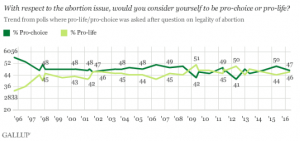
Further, data shows that for more than twenty years around 80% (currently 81%) of USians consistently consider that abortion should be legal in at least some circumstances:
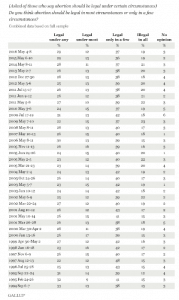
Therefore if someone is worried that they’re going against what most people want regarding abortion by supporting Clinton over Trump, they’re not. Further, abortion being legal does not make it compulsory. Everyone continues to be able to exercise their personal choice. What they cannot do, and should not be able to do in a free country, is force their choice on another person.
Marriage Equality
The third thing that many conservatives are concerned about is the legalization of same-sex marriage. In recent years there has been a big change in public opinion. Five years ago the shift occurred so that a majority now support same-sex marriage in the United States, and that majority has increased ever since:
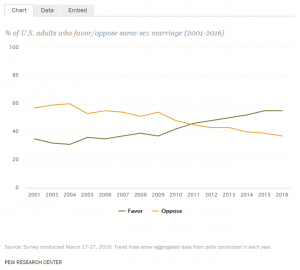
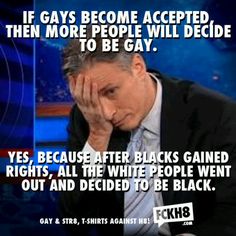 This trend is particularly marked amongst younger people and therefore is likely to continue. According to the Pew Research Center data, support for same-sex marriage amongst millennials (those born after 1981) is currently 71% and 56% in generation X (those born 1965-80). Republicans may have the impression that there is little support for same-sex marriage if a majority of their friends have the same political view as they do because the Pew survey notes a noticeable difference in support based on political identification: marriage equality is supported by 70% of Democrats, 61% of Independents, but only 33% of Republicans. However, like abortion, making same-sex marriage legal does not make it compulsory, it has absolutely no effect on anyone else, and the ability of same-sex couples to marry has a positive effect for both them and society as a whole.
This trend is particularly marked amongst younger people and therefore is likely to continue. According to the Pew Research Center data, support for same-sex marriage amongst millennials (those born after 1981) is currently 71% and 56% in generation X (those born 1965-80). Republicans may have the impression that there is little support for same-sex marriage if a majority of their friends have the same political view as they do because the Pew survey notes a noticeable difference in support based on political identification: marriage equality is supported by 70% of Democrats, 61% of Independents, but only 33% of Republicans. However, like abortion, making same-sex marriage legal does not make it compulsory, it has absolutely no effect on anyone else, and the ability of same-sex couples to marry has a positive effect for both them and society as a whole.
Religious Freedom
This issue is a canard. There is no evidence that anyone’s religious freedom has been affected or will be affected by any actions of a Clinton presidency. Religious freedom is protected by the US Constitution and despite fearmongering by Donald Trump and others, there is absolutely no indication that this is going to change. The point is, someone else getting rights you have always had does not mean you are losing rights.
Voting Rights
Clinton has said she wants to reverse the Citizens United v. Federal Election Commission decision. If you think big money belongs in elections then I doubt anything I say can convince you otherwise. However, are you so committed to this that you would vote for a sociopath for president on the off-chance that Clinton can achieve this goal? Following the 2014 elections the Brennan Center for Justice did an analysis of money spent in the senate races. As reported by US News, they found:
… outside spending more than doubled since 2010, to $486 million. Outside groups provided 47 percent of total spending … in 10 competitive races in [2014’s] midterms.
“The premise that the Supreme Court was relying on, that these groups would be truly independent of the candidates themselves, is very questionable,” says Commissioner Ellen Weintraub, one of three Democrats on the six-member Federal Election Commission. …
The court effectively has said a donation of $1,000 does not, legally speaking, indicate a stronger association with a candidate than a donation of $10. So even when a candidate is aware of a huge donation to his or her single-candidate PAC, it’s not considered a problem.
“Plainly, if you worry about the corrupting influence of somebody making a million-dollar contribution directly to the candidate, the notion that the candidate can’t be corrupted by a million-dollar contribution that they know about to a super PAC that’s advocating solely on their behalf – it just doesn’t make sense to a lot of people,” [Weintraub] says.
As the rules are currently written, these PACs are able to circumvent restrictions preventing them from directly coordinating with campaigns, even though they’re often run by members of candidates’ inner circles. Sometimes those efforts are literally laughable … as campaigns and PACs hide their unofficial coordination in plain sight, such as through public announcements of their plans for television ad buys or through out-of-the-way Twitter accounts. …
As a result, a small group of wealthy donors has gained even more influence on elections, and are able to maintain that influence once candidates take office.
Of the $1 billion spent in federal elections by super PACs since 2010, nearly 60 percent of the money came from just 195 individuals and their spouses, according to the Brennan Center report. Thanks to Citizens United, supporters can make the maximum $5,200 donation directly to a candidate, then make unlimited contributions to single-candidate super PACs.
The huge amount of money coming from a small number of donors should be a concern to everyone. It flies on the face of the principle of “one person, one vote.”
So if the only reason you are voting for Donald Trump is you think he will nominate better Supreme Court justices, this really isn’t something you need to worry about. You can vote for Hillary Clinton. She will nominate highly qualified justices who, despite Trump’s fearmongering, will not ruin the country. And in addition you won’t have to worry about the dangers of a president who clearly does not have the ability or temperament to do the job.
Update: 14 August 2016
In the post above I noted that the US Supreme Court is currently more conservative than is has been for many years. What I was unaware of is that it is also more unpopular than it has been for many years. Gallup has been surveying public opinion of the Supreme Court, and approval is currently only 42%. It seems that the more liberal the court is, the more its decisions find favour with the USian public.
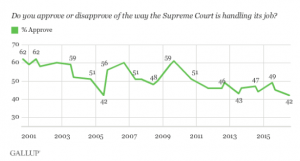
This is another reason conservatives should not be concerned that the Supreme Court may become more liberal if Hillary Clinton becomes president – that simply reflects the mood of the country as a whole. I would also note that the last time the approval rating of the Supreme Court was this low was when the Heller decision was made i.e. when they reinterpreted the Second Amendment to mean that everyone had the right to own a gun. The country will not go into a moral spiral if you vote for Clinton, who is clearly the safer choice.


Uh, no, Clinton is an ideologue (perhaps slightly less crazed than Bernie or Barry, but an ideologue nonetheless) whose extremist executive and judicial appointments will harm our country, threaten our liberty, and exacerbate the concentration of power in the federal government and in the crooked politicians, bureaucrats, judges, and influence peddlers who feed off it — not least, her own sleazy family.
Three of the issues in your analysis deal with rights explicitly enshrined in the Bill of Rights, while the other two involve completely fictitious “rights” that were made out of thin air by illegal judicial fiat. With Clinton we’re guaranteed to get more illegal fiats and further erosion of the Bill of Rights.
So which ones are you talking about? If they’re enshrined in the Bill of Rights, they should be rights for everybody and can’t be overturned unless most people want it. And there was no “invention” there was just realizing the the rights applied to EVERYONE not just white Christian males, like when they abolished slavery, extended voting rights etc.
That’s just it: The abolition of slavery, as well as guarantees of suffrage irrespective of race and sex, were accomplished by legitimate means, following the amendment process provided by the Constitution, in accord with the rule of law and the principle of democratic self-government. It is a violation of the Constitution, the rule of law, and the principle of self-government for judges to make laws or amend the Constitution by fiat to suit their own personal preferences.
Hillary and crooked politicians of her ilk quite explicitly call for undermining the First Amendment so they can regulate and suppress speech — that’s what Citizens United is about. And of course the extremist left is only to eager to trample conscience rights, religious liberty and freedom of expression in order to compel absolute ideological conformity. Nothing could be more un-American. (Though a close second is their idea that a person is defined by heredity.)
Trump has specifically stated that he wants to limit the power of the press and make it easier to sue them. He has banned some news organisations from attending his press conferences, including the Washington Post and Politico, which while they might be left-leaning are serious players. Yes there are extremists on the left regarding free speech (I’ve criticized them myself) but Clinton has never shown that she would go down this route.
Religious conservatives can’t handle the idea of marriage equality because of their religion. They cannot reasonably argue against it on any other grounds and surely freedom of religion is one of the bedrocks of the Constitution. They may not like it but they cannot force their idea of marriage on everyone else.
The constitution will be protected during a Clinton presidency. That cannot be relied on with a Trump presidency.
And Trump is a demagogue, (perhaps slightly less crazed than Putin or Mussolini) whose extremist executive and judicial appointments will harm our country, threaten our liberty, and exacerbate the concentration of power in the federal government and in the crooked politicians, bureaucrats, judges, and influence peddlers who feed off it — not least, his own sleazy family.
This scenario sounds much worse to me. I’d take an ideologue over a demagogue any day. And Right Wing Christian Republicans like W. Bush are far more ideological than Clinton. Not to mention other Republican Presidential hopefuls like Cruz.
But go ahead, support the candidate that actively calls for violence and division, lies at every opportunity, denies global climate change, still believes in trickle-down economics and is a blatant bigot. That’s a smarter choice.
Nice post, Heather. While I cannot bring myself to vote for a candidate so flawed as Clinton, using even her to rationalise voting for an erratic narcissist like Trump doesn’t show a care for the Constitution, but reckless disregard for it, along with a great many other things we should hold dear.
I saw something in passing last night that she’s going to make some big policy announcements today. I can’t remember what was on the list except it sounded pretty progressive and included a $15/hour minimum wage.
I hope she does it. The one thing Bill got right was targeting tax cuts on the lower half rather than the rich.
So am I right that she did not address the minimum wage? It seems all she did was to reiterate opposition to the TPPA in a way that allows her to change her mind post election.
In the end all I saw was her comments on free trade and she did give herself an out on TPP as you say, though I suspect it’s one many will have missed. I suspect she’s thinking she won’t have to deal with it because it has a good chance of going through before she becomes president anyway.
As you know I’m a strong proponent of free trade so I’m not too worried, but it would be interesting to see if the deal could be signed without the contentious legal stuff. Even though I’m for the deal, I don’t see why that’s there and why state representatives would feel the need to include it. I admit that part stinks a bit.
I’ll say it stinks a bit. This isn’t a free trade treaty, it’s a corporate-written deal to increase corporate profits by changing the rules even further in their favour. The “contentious legal stuff” is exactly what they want and the state reps “feel the need” because money talks, whether it’s direct campaign contributions or the threat of withholding corporate investment in one’s country. You need to take the rose-coloured glasses off on this one, Heather.
And Hillary will absolutely have to deal with it post-election. Though she will have no official power until January, she’ll have huge moral power as President-elect with an out going Dem president. That’s why she’s being pressed so hard now, but she doesn’t want to split with Obama before the election. If she’s lying as many still suspect, a meaningless change will be found as a fig leaf for her to support. But if she is serious and continues to oppose as most of her constituents want, Obama will be under massive pressure as the lame duck not to saddle his successor with an unwanted treaty. She has the power to kill the TPPA if she wants, and whether she stiffs her corporate backers on this will not only be her first great test, I believe it will largely indicate the course she will take as president.
Nice post, well documented, but as you point out, for many, facts don’t figure into the equation. If you are tied to the notion that Clinton is the devil incarnate, you’re not going to vote for her no matter what – even as that ‘what’ is a slick used car salesman with serious mental issues. No, there is no reason to think Hillary will not make a good president. But, if the republicans hold the house and senate, not a lot will get done. Let’s face it, while the US has a rich history of progressive movement, there is a substantial conservative and suspicious strain as well. The two are struggling for the future – one to make needed change, and the other to slow it down.
The majority recognize the need to move forward. The problem is the amount of money going to support the conservative extremists. Of those 195 top money donors I mentioned, I think it was six in the top ten supported Ted Cruz. In 2012 a large proportion supported Rick Santorum – his campaign was almost entirely bankrolled by Selwyn Adelson (?spelling). He couldn’t have kept going as long as he did without him.
Great analysis Heather; it sheds some sanity on the perceived deep division within the court. I also like how you are able to utilize humor as well. Those Warren tweets and the Stewart quote are spot on.
If you switch the topic around though and imagine what Trump would do based on what he’s said, adding 4 or 5 more Scalias, I don’t think the same analysis would hold. Decisions like Citizen’s United would never be overturned and we would continue to morph into an oligarchy (many say we already are), voting rights would probably be dismantled further, and social issues like the right to choose and marriage equality could surely be reversed, and forget about universal health care. Clinton’s choices would keep the status quo on social issues and could hopefully overturn disastrous decisions like Citizen’s United and strengthen voting rights and health care.
Thanks Mark. I think USians should be worried about what Trump will do to freedom of speech, especially in relation to the press, given the actions he’s already taken and the declarations he’s already made. He has said he thinks the media has too much freedom, especially when they publish/broadcast stuff about him he doesn’t like. That’s really dangerous.
Also, though I doubt he personally is worried one way or the other about abortion, he will nominate anti-choice justices and that could be a social powder keg. The country will be back to women dying or losing their ability to have children because of back street practitioners or worse. Babies will be abandoned. Child abuse and child poverty will increase. Women will suffer.
I don’t think your comment is targeted at me right? We don’t derail on any issue…
No, of course not! It’s just a general comment. We’re good. 🙂
I’ve added an update to the end of this post.
I guess the best way to deal with optimal tragedy is humor. 😎
Yeah. It’s not even funny – it’s not unlikely if the fuckwit becomes president.
The Clintons have demonstrated their utter contempt for the rule of law throughout their sleazy careers. Bill was impeached and disbarred for committing perjury and otherwise obstructing the administration of justice — precious little accountability, though his sleazy accomplice so far has escaped even that much.
At least under President Trump the lamestream media will take a break from eight years of screaming themselves hoarse in praise of Obama the lightworker. Who knows — maybe they’ll even start doing their jobs.
“utter contempt for the rule of law”
I don’t think general respect for the law is inconsistent with Clinton’s womanizing. After all many national leaders tend to be sexually hyperactive (I’m sure we could build a long list). This does not imply they were not responsible leaders in their administrative capacity. If “tom cats” were all to be disqualified from public life, we would probably have had to do without some of the most accomplished politicians and statesmen to have ever served this country. There is, as far as I know, no substantial illegalities involving the Clintons that has passed the first sanity check. On the other hand, Reagan had his illegal contra affair, Bush 2 lied us into a tragic war. How does being promiscuous measure against those transgressions?
And besides, it’s Hillary that’s up for election not Bill. There’s plenty of evidence of Trump’s womanizing such as openly having affairs with other women during his marriages.
Politifact has rated Trump the biggest liar of all the politicians they’ve ever analyzed in terms of what he says during the campaigns while Hillary Clinton is one of the most honest. She has also been cleared of all charges made against her.
The Trump University case looks bad for The Donald, as does his failure to release his tax returns.
Then there’s this:
https://youtu.be/8cHZUCADYxY
Now you’re just messing with me. “Honest” and “Hillary” go together like an igloo and a tropical isle. Bill Safire’s words in the NY Times two decades ago ring truer now than ever: She’s a “congenital liar” who “has never been called to account for lying herself or in suborning lying in her aides and friends” — some of whom went to jail for her (or, in at least one case, took a bullet for her). Evading prosecution is by no means the same as being “cleared of all charges”.
http://www.nytimes.com/1996/01/08/opinion/essay-blizzard-of-lies.html?smid=tw-share
The Clintons are a single indivisible corrupt enterprise. Hillary was peddling influence long before she held any office in her own right. The Clinton State Dept. gave millions in grants to Clinton Foundation donors and Bill’s “consulting” “clients”.
Hillary could always denounce Bill, repudiate her own role in his administration, pledge that he would play no in hers, and that he would not be allowed on the White House grounds. Then and only then would Bill be irrelevant.
You might have a point — if the last few decades had not happened, and legal standards regarding sexual harassment and assault had not evolved. Ask Hillary if survivors of sexual harassment and assault deserve to be believed, and deserve to see justice done — no matter how powerful the perp may be.
Talking about justices, by now the GOP must be aware there is a good chance they will be absolutely routed in November. Why would they still oppose Garland? He’s not a political kind of animal, but an undisputed ‘real’ judge, in the positive sense. He might even vote quite conservatively in some cases, depending on merit. If I were a Republican I’d ‘choose eggs for my money’ and put great efforts to get Garland on SCOTUS, the best deal I could get.
I really don’t get their (GOP) stance, it appears so self-defeating.
Note , as an outsider, the SCOTUS lost a lot of credibility with me with their partizan stance in the 2000 elections.
There’s plenty of talk on places like Fox News that makes it clear that, except for those who look at Trump through rose-tinted spectacles, they know they’re heading for a loss of epic proportions. However, now that they’re taken a stand against Garland there’s no way they’ll back down, especially because of the signals it would send to the Beltway. All they can hope for is that Clinton will stand by the nomination of Garland.
I too was shocked by what happened in the 2000 elections. I’ve since heard that Florida wasn’t the only issue. There was another state (I think Ohio, but not 100% sure) where there is strong evidence that the voting machines were rigged in favour of the GOP but because of the scandal it would cause it was decided not to pursue it. It sounds like a conspiracy theory except the people who were telling it were reliable.
And check out this clip from the Rachel Maddow Show about a possible Clinton Landslide:
https://youtu.be/zerWCVpXTr8
Not sure about 2000, but corruption in Ohio in 2004 is well documented, with some actually going to jail, all very low level officials, of course. If it weren’t for partisan control of the electoral systems in so many states, Republicans would have a much harder time hanging on to power via gerrymandering, voter suppression laws and outright corruption. Many of these are now being challenged in the courts with quite a bit of recent success, such as in North Carolina, where gerrymandered boundaries were declared to be based on race. Unfortunately, all this takes years to unwind; even the NC corrupt boundaries will stay in force for this election. Despite this, if Trump keeps doggedly to his path of self-destruction, even the House majority could be in play, so I say let Trump be Trump!
Reality check: Actual documented electoral fraud favors Democrats.
https://www.rnla.org/votefraud.asp
So say a bunch of Republicans. If you want to find Dems acting badly, the 2016 primary games that favoured Clinton had way more impact that all this put together.
As for gerrymandering, racial and otherwise, let’s face it: Both parties and all incumbents are for it. Nobody likes competition.
It’s no coincidence that no black U.S. Representative from a majority white district has been a Democrat.
So oppose it, don’t excuse it, though it seems the Reps must do it smarter, given they hold the House with a minority of the total popular vote.
Why would there be no way to back down? What signals would that send to the Beltway? What is the Beltway anyway?
What I mean by backing down is that they would lose face – they would have to admit they were wrong. They say the reason they won’t put up the Garland nomination is that it’s Obama’s last year so it wouldn’t be right. To put him forward now they would have to say that it doesn’t matter after all that it’s Obama’s last year. They will not do that, even though your reasoning about him being a better option for them as a justice is completely correct. They will bite off their nose to spite their face. What I mean by the Beltway is basically the media talking heads. They would take great delight (and who can blame them) in rubbing the GOP’s face in their back down on this. The hypocrisy would be huge is they now let Garland through. It would be played on hugely by the Dems too, and lose the GOP votes for not standing up to Obama. It also sends the message that they believe they’re going to lose, and the party itself can’t do that. People don’t vote for a party that thinks it will lose.
I guess you are more or less right,
However, didn’t they lose face already by not really endorsing Trump? (say eg. Ryan explaining that he is a textbook example of a racist, but still supporting?). I mean, they already have so much egg on their face, a little bit of extra yolk would not really hurt. They could (e.g..) easily say that after a “thorough study of precedents” they came to the conclusion that ‘last year’ nominations are done after all (MC just made an honest mistake), or something -nothing to do with a probable loss in November of course. If I were a Republican I still would try. (but then, there ‘s reasons I’m not a US republican :))
And then, Rep or Dem , Garland would be such an outstanding, excellent choice. I can’t think of anybody more deserving (well I have to admit here I do not know that many US justices records, there may possibly be others equally deserving I do not know of).
[And on a more frivolous note, despite having (as far as I know) no experience as a Judge, I think Obama himself -he is a trained lawyer and a law teacher after all- would not be a bad choice as a SC justice either 😛 ]
Of course you’re right, but it still won’t happen. It might have happened once upon a time in the GOP, but for almost eight years now their only consistent policy has been to oppose Obama no matter what and this is the result. They won’t admit any mistake, honest or otherwise, and no-one would believe them. They’ve made cooperation and compromise dirty words. Garland would be a good choice as far as I can tell too and he’s largely non-partisan. I think that’s one of the reasons Obama nominated him – there are no real reasons for the GOP not to approve him and because they haven’t they have exposed their hypocrisy.
I’ve heard several people say that about Obama, and I agree, but like you that’s another one I can’t see happening. 🙂
In other words, compared to, say, Scalia, d’Alito, Sotomayor or Thomas (note, I have great respect for the latter two) Garland would be a giant (IMMO). I never understood why Scalia was so highly regarded.
I don’t see what was so good about Scalia either. He believed in young-earth creationism FFS! I’m not saying he was a bad judge, but there’s also no doubt he let his religious beliefs influence his decisions which disqualifies him from being called “great” imo.
Yes Heather, I’d second that.
I thought he was a Catholic, hence not a Young Earth creationist. Are you sure?
Sadly (if so) it didn’t disqualify him from being a SC judge.
He was Catholic, but a very conservative one. He made a speech not long before he died that referred to his YEC beliefs: http://www.patheos.com/blogs/progressivesecularhumanist/2015/06/scalia-commencement-speech-supports-young-earth-creationism/
Yes, that link provides evidence he was a creationist, but the ‘5000 years humans have been around’ is -in my modest opinion- not enough to characterise him as a real YEC. It is an indication, but not really clear evidence.
[look at me, somehow defending the despicable Scalia 🙂 ]
You’re right – it’s not evidence that would stand up in, ahem, court. 🙂
Here’s another take on the issue: http://pandasthumb.org/archives/2015/06/is-scalia-a-cre.html
I guess we’re never going to find out either way now.